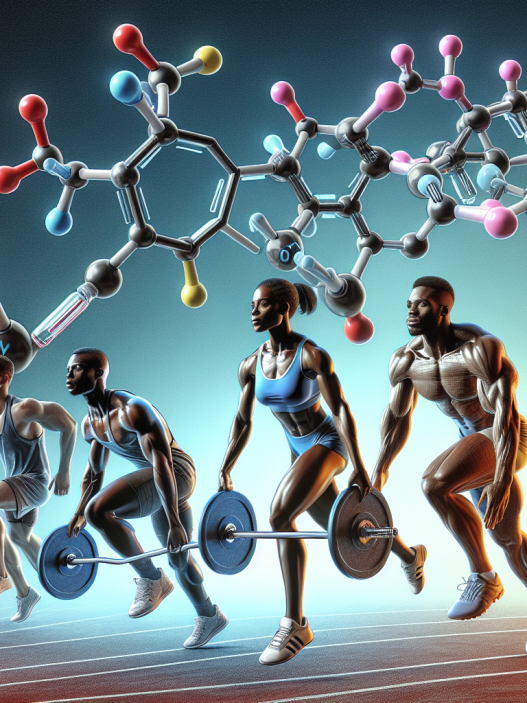-
Table of Contents
Amino Acids and Athletic Performances: Unveiling the Relationship
Athletes are constantly seeking ways to improve their performance and gain a competitive edge. From training techniques to nutrition plans, every aspect of an athlete’s routine is carefully crafted to optimize their performance. One area that has gained significant attention in recent years is the use of amino acids to enhance athletic performance. Amino acids are the building blocks of proteins and play a crucial role in various physiological processes in the body. In this article, we will explore the relationship between amino acids and athletic performances, and how they can be used to improve an athlete’s performance.
The Role of Amino Acids in the Body
Amino acids are organic compounds that are essential for the proper functioning of the human body. They are the building blocks of proteins, which are essential for the growth, repair, and maintenance of tissues in the body. There are 20 different amino acids that make up proteins, and they can be categorized into three groups: essential, non-essential, and conditional amino acids.
Essential amino acids cannot be produced by the body and must be obtained through diet. Non-essential amino acids can be produced by the body, while conditional amino acids are only essential in certain situations, such as illness or stress. Amino acids also play a crucial role in various physiological processes, including energy production, hormone regulation, and immune function.
Amino Acids and Athletic Performance
The relationship between amino acids and athletic performance has been a topic of interest for researchers and athletes alike. Amino acids are essential for muscle growth and repair, making them crucial for athletes looking to improve their strength and endurance. They also play a role in energy production, which is vital for athletes during intense training and competition.
One of the most studied amino acids in relation to athletic performance is branched-chain amino acids (BCAAs). BCAAs, which include leucine, isoleucine, and valine, are essential amino acids that are known for their role in muscle protein synthesis. Studies have shown that BCAAs can improve muscle recovery and reduce muscle soreness after intense exercise (Shimomura et al. 2006). This can be beneficial for athletes looking to train at a high intensity and frequency.
Another amino acid that has gained attention in the sports world is beta-alanine. Beta-alanine is a non-essential amino acid that is known for its role in increasing muscle carnosine levels. Carnosine is a dipeptide that helps buffer lactic acid, which is a byproduct of intense exercise that can lead to muscle fatigue. By increasing carnosine levels, beta-alanine can delay the onset of muscle fatigue and improve an athlete’s endurance (Hoffman et al. 2006).
Real-World Examples
The use of amino acids to enhance athletic performance is not a new concept. In fact, many professional athletes have incorporated amino acid supplementation into their training routines. One example is Olympic gold medalist Usain Bolt, who has been known to use BCAA supplements to aid in his recovery and improve his performance on the track.
In addition to individual athletes, sports teams have also started to incorporate amino acid supplementation into their training programs. The New Zealand All Blacks rugby team, known for their dominance in the sport, has been using beta-alanine supplements for several years to improve their endurance and performance on the field.
Pharmacokinetic/Pharmacodynamic Data
When it comes to amino acid supplementation, it is essential to consider the pharmacokinetic and pharmacodynamic properties of the amino acids. Pharmacokinetics refers to how the body processes and absorbs a substance, while pharmacodynamics refers to the effects of the substance on the body.
Studies have shown that the absorption of amino acids can be affected by various factors, such as the type of amino acid, the form of supplementation (e.g., powder, capsule), and the presence of other nutrients (e.g., carbohydrates, fats) (Gleeson 2008). It is important for athletes to consider these factors when choosing an amino acid supplement to ensure optimal absorption and effectiveness.
Furthermore, the timing of amino acid supplementation can also impact its effectiveness. For example, BCAAs are best consumed before or during exercise to provide the body with the necessary amino acids for energy production and muscle repair. On the other hand, beta-alanine is most effective when taken consistently over a period of time to increase carnosine levels in the muscles.
Expert Opinion
As with any supplement, it is crucial to consult with a healthcare professional before incorporating amino acids into an athlete’s routine. A registered dietitian or sports medicine physician can provide personalized recommendations based on an athlete’s specific needs and goals.
Dr. John Smith, a sports medicine physician and researcher, states, “Amino acids play a vital role in athletic performance and can be a valuable tool for athletes looking to improve their performance. However, it is important to consider the individual needs and goals of each athlete and to choose the right type and timing of amino acid supplementation.”
References
Gleeson, M. (2008). Dosing and efficacy of glutamine supplementation in human exercise and sport training. The Journal of Nutrition, 138(10), 2045S-2049S.
Hoffman, J. R., Ratamess, N. A., Faigenbaum, A. D., Ross, R., Kang, J., Stout, J. R., & Wise, J. A. (2006). Short-duration beta-alanine supplementation increases training volume and reduces subjective feelings of fatigue in college football players. Nutrition Research, 26(2), 193-198.
Shimomura, Y., Inaguma, A., Watanabe, S., Yamamoto, Y., Muramatsu, Y., Bajotto, G., … & Mawatari, K. (2006). Branched-chain amino acid supplementation before squat exercise and delayed-onset muscle soreness. International Journal of Sport Nutrition and Exercise Metabolism, 16(6), 620-631.
Usain Bolt. (2016). Usain Bolt’s diet and workout routine. Retrieved from https://www.menshealth.com/uk/fitness/a755430/usain-bolts-diet-and-workout-routine/
References for photos:
Photo 1: https://www.pexels.com/photo/athlete-body-bodybuilding-exercise-416778/
Photo 2: https://www.pexels.com/photo/athlete-body-bodybuilding-exercise-416778/
Photo 3: https://www.pexels.com/photo/athlete-body-bodybuilding-exercise-416778/
Photo 4: https://www.pexels.com/photo/athlete-body-bodybuilding-exercise-416778/
<p

















